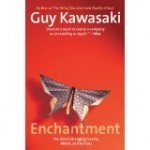Dan Heath's Blog, page 2
July 5, 2011
Interminable Terms and Conditions
I was trying to buy something on iTunes the other day, and it prompted me to agree to Apple’s new “Terms and Conditions.” On my iTouch, the Terms occupied 62 screens of text. So I emailed the Terms to myself and, in the meantime, clicked “I Agree.”
Turns out the Terms are 16,914 words. (Switch, a normal-sized nonfiction book, is about 73,000 words.) Let’s assume that people can read and comprehend the Terms at a speed of 200 wpm. (That’s the lower end of the “reading for comprehension” speed range cited on Wikipedia, which should be a fair estimate given the quality of the prose, which makes an IRS form seem like a bodice-ripper.) At that rate, it would take about 85 minutes just to read the Terms.
These New Terms, by the way, come on the heels of the Old New Terms (from March 31), which were 15,170 words. With quarterly updates of the Terms, the average iTunes customer would need to spend a full work day annually just reading legalese. (That’s an 8-hour shift minus an hour for lunch and another for Facebook.) By way of comparison, you can rent a car or bungee-jump by agreeing to a one-page contract.
There’s no sense in getting riled up about something so small, but it just makes you ponder this fact: Dozens of Apple executives have studied this situation and concluded that this is a perfectly reasonable thing to expect your customers to do (that is, either sign a contract blindly or spend a day annually reading legalese).
It is possible, by the way, to create non-shameful contracts: Check out Dropbox’s latest Terms, which includes lines like this: “The Services provide features that allow you to share your stuff with others or to make it public. There are many things that users may do with that stuff (for example, copy it, modify it, re-share it). Please consider carefully what you choose to share or make public.”
June 22, 2011
U.S. cigarette labels: Now Elephant-friendly
The FDA’s new cigarette warning labels, which will appear on packs produced after September 2012, are admirably shocking – a great improvement over the old labels, which were heavy on factoids. (E.g., “Cigarette smoke contains carbon monoxide.”) I’m surprised these punchy labels survived the government committee process. Here’s hoping they work.
By the way, Canada was way ahead of us on this. Check out some Canadian cigarette-pack greatest hits.
June 5, 2011
3 Questions for Guy Kawasaki
Entrepreneur and venture capitalist Guy Kawasaki recently released Enchantment, his 10th book. Robert Cialdini, the author of the classic book Influence, said of Guy’s new book, “Kawasaki provides insights so valuable we all wish we’d had them first.”
To celebrate the launch of Enchantment, we asked Guy three questions about the book. (You can order the book here or watch Guy speaking about the book’s themes here.)
1. In the course of writing Enchantment, what’s the one thing you learned/discovered that has had the most impact on your life?
I learned about the generosity of my social following. When I needed fresh examples of likability, trustworthiness, launch techniques, ways to break down resistance, and so on, I received dozens of them via Twitter and my blog. I also solicited people’s personal stories of being enchanted and received dozens of those too. Towards the end of writing, I asked for volunteers to critique the book, and approximately 300 people stepped forward. The point is that I learned about the generosity of strangers, and that has made me cognizant that I should be more generous too.
2: Being enchanting is in our self-interest; it lets us attract supporters for our ideas, earn buy-in from colleagues, charm new acquaintances, and so on. Do you think there’s there a fine line or a wide berth between being enchanting and being manipulative?
There is a wide berth. The acid test is whether the outcome of the enchantment benefits the enchantee–really benefits, not, “I did him a favor by convincing him to buy what I was selling.” Don’t get me wrong: it’s okay if there is an alignment of interests where you and the enchantee both benefit, but the enchanter shouldn’t be the primary beneficiary.
The acid test of the acid test is, “Would I still try to catalyze this change if I had absolutely nothing to gain?” For example, if you haven’t worked for Apple for ten years, and you still try to convince people to buy Macintoshes because you know that’s the right computer for them. Or, if you tell people to fly Virgin America to Fort Lauderdale instead of other airlines to Miami, and you don’t work for Virgin America. That’s enchantment.
3: What’s something simple that anyone could try today to become 2% more enchanting?
2% is that a typo? Who cares about 2% improvement? Forget all that Japanese stuff about the relentless pursuit of incremental improvement. Here’s one thing most people can do that will make them stand out from the crowd: Answer email within forty-eight hours. Almost no one does this. I try my hardest and can’t do it either. But it is the simplest—albeit also maybe the hardest—way to become a digital enchanter.
Dan Heath's Blog
- Dan Heath's profile
- 498 followers





